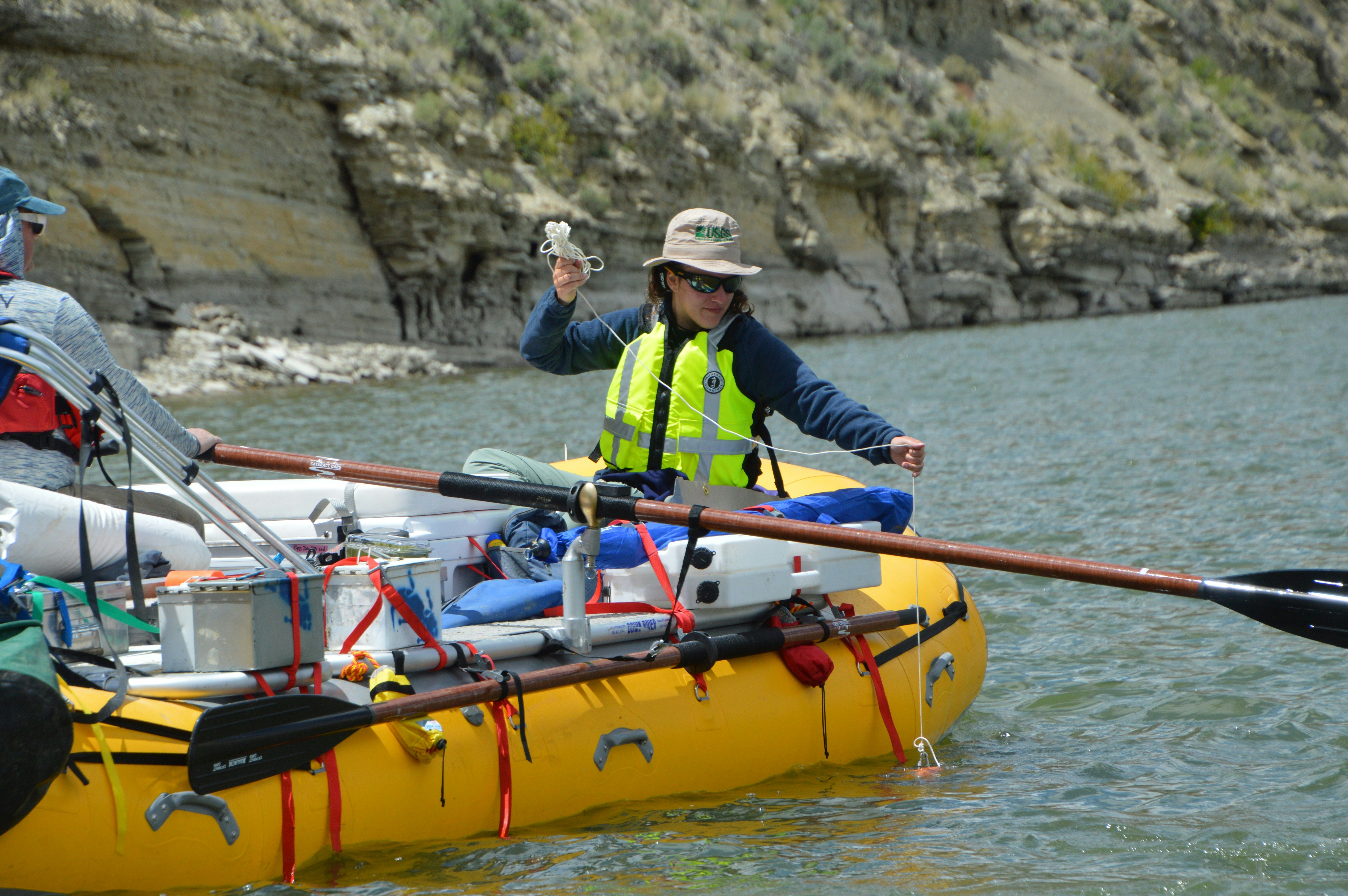Number of Foreign Students Working in the US after Graduation for 2026
More than a million foreign students enroll in the U.S. annually. They face challenges unique to international students, such as homesickness and culture shock, on top of getting into their preferred colleges with high acceptance rates and completing their studies. They are often under pressure from their family back home rooting for their diploma as a stepping stone to finding a job in the U.S. However, graduating from a U.S. school does not guarantee a job in the country. Some are hired, others may take an OJT or on-the-job training, but many will likely go back home staking their career elsewhere.
If you are curious about how many international students stay in the U.S. after graduation, this article will give you the facts and figures. You will get to know foreign students’ countries of origin, popular fields of study, job prospects, and other details. With this information, aspiring international students can get a realistic picture of getting a degree and a job in the U.S. and decide if it is the path they want to pursue.
Foreign College Students Staying and Working in the U.S
- Foreign Student Enrollment Dips But Number of OPT Participants Rises
- Number of Foreign College Students in the U.S. by Country of Origin
- Number of Foreign College Students in the U.S by Field of Study
- Number of Foreign College Students in the U.S by Degree Type
- Number of Foreign College Students in the U.S by College Type and Hosting State
- Who is hiring who after graduation?
- What Are the Benefits of Online and Alternative Educational Pathways for International Students?
- How Can Accelerated Masters Programs Boost Employability for International Students?
- OPT vs. H-1B Visa Statistics
- Pros and Cons of the OPT Program
- Possible Student Visa Policies under Biden Administration
- Can one-year master programs provide a competitive edge for international students?
- Do employers value non-traditional credentials?
- The Challenges Faced by International Students When Securing Post-Graduation Employment
- How can dual degree programs boost career prospects for international students?
- What financial aid options can help international students manage educational expenses?
- Can admission consulting services enhance application outcomes for international students?
- Snapshots of Foreign College Students in the U.S.
Foreign students in the US who come to the country to study in college typically get an F1 visa. But if they want to stay and work in the U.S., they have three visa options. First, there’s the Optional Practical Training (OPT) program which allows them to be employed under an F1 visa for one year. This visa can be extended for up to two years if the student enrolls in science, technology, any engineering majors, and math or the so-called STEM degrees.
After they graduate, students can apply for an H-1B visa. This is a type of nonimmigrant visa that is issued to people with knowledge in specialized fields such as IT, science, finance, medicine, accounting, architecture, engineering, and mathematics. It allows the holder to stay in the U.S. for a maximum of three years. However, it may be extended to a maximum of six years. But with a cap of 85,000 H-1B visas, it is difficult to get one. One cannot apply for it directly and would need a corporate sponsor to make a petition on their behalf.
The third visa option for foreign college students looking to stay in the U.S. is through a green card, which can be family-based or employment-based green cards. But with the denial rates for employment green cards increasing by 15.5% in the last quarter of 2019, it’s also the most challenging among the free aforementioned visas to get.
Foreign Student Enrollment Dips But Number of OPT Participants Rises
According to independent think tank Pew Research Center, there were about 1.5 million foreign graduates from U.S. colleges and universities who were approved to work under the OPT program from 2008 to 2016. Since the program was first introduced in 2008, participation grew by 400%.
However, a survey by Open Doors revealed a decline in enrollment figures for all international students in the U.S. for 2020 at all academic levels. Enrollment of international undergraduate students declined by 2.4%, while those of graduate students shrunk by 1.3%. For international non-degree students, there was a 5% decrease. This is the third straight year that international student enrollment suffered from decreasing numbers.
Analysts say that the decline can be attributed to a number of factors, like the costs of education in other countries, changes to the quality and capacity of universities in students’ home countries, and programs that promote foreign government scholarship. However, educators also acknowledge the role of the “Trump effect" on the decline. Anti-immigrant rhetoric has caused students to worry about their safety and security in the U.S., which in turn made them less interested to stay or work there.
Despite the decline in foreign student enrollment, the number of OPT participants from 2018 to 2019 increased by 9.6%.
Number of Foreign College Students in the U.S. by Country of Origin
From 2004 to 2016, the Pew Research Center found that 74% who studied and worked under OPT were from Asia. Students from Asia largely outnumbered those from other regions like Europe and Latin America both at 8%, and Africa at 5%.
Among students in Asia, 30% are from India and 6% are from Korea. If you would like to know how many Chinese students stay in the U.S. after graduation, they account for 21% of Asian students. This has largely been unchanged in 2018, based on data from the Cato Institute.
However, the Open Doors Fast Facts 2020 Report showed that most foreign college students in the U.S. now come from China. There were 372,532 students from China which made up 34.5% of the international students in the U.S.A in 2020. This was followed by 193,124 students (18%) from India and 49,809 (4.6%) from South Korea.
Number of Foreign College Students in the U.S by Field of Study
By far, the most popular fields of study for OPT participants are within the STEM disciplines. According to the Pew Research Center, 53% of students who worked under OPT from 2004 to 2016 had STEM degrees from a U.S. college or university. Many of them are taking a crack at tech job opportunities like PHP developers and software engineers.
However, 2019 figures reveal that business management degrees are becoming a popular option, too. Based on data from the Open Doors Report, 230,780 students (20.5%) chose to study engineering, while around 203,461 students (19.1%) chose math and computer science. On the other hand, 182,170 (16.2%) students studied business and management. Other popular fields of study include social sciences, physical and life sciences, and fine and applied arts.
Number of Foreign College Students in the U.S. by Degree Type
According to Pew Research, 840,800 or 57% of graduates under the OPT program held master’s degrees. Pew researchers noted a dramatic increase in OPT approvals among master’s degree holders. From 2004 to 2016, it was up by a whopping 337%. In contrast, doctorate approvals increased by 187% while bachelor’s degrees by 115%.
In 2020, foreign college students who study in USA after graduation are opting to study for Ph.D. degrees rather than master’s or bachelor’s degrees. While the Open Doors Report did not have OPT data for participants’ degree types, the report showed that enrollment was the highest at doctorate-granting universities at 786,498 students. This is followed by master’s colleges and universities at 136,127 students. At the bottom three are associate’s colleges at 79,187 students, special focus institutions at 37,551 students, and baccalaureate colleges at 36,133 students.
Number of Foreign College Students in the U.S. by College Type and Hosting State
When it comes to where foreign college students in the U.S. are headed, data shows that they favor going to public colleges or universities. Based on Pew Research data, 827,200 students or 56% of foreign graduates under the OPT program attend public colleges or universities. On the other hand, 566,100 (38%) students chose private nonprofit institutions. Only 44,300 (3%) went to private for-profit institutions while 36,800 went to schools not classified into categories by the Carnegie Classification Institutions of Higher Education.
In terms of states hosting the most number of international students, the top spot goes to California (Education.org, 2019). In 2019, the Golden State welcomed 161,693 students and had 1,054 schools with Student and Exchange Visitor Program (SEVP) certification. At second place is New York with 124,277 students and 567 SEVP-certified schools. In third place is Texas with 81,893 students and 463 SEVP-certified schools followed by Massachusetts with 71,098 students and 321 SEVP-certified schools.
Who is hiring who after graduation?
Now, to address the question of can international students work in USA after graduation, the answer is yes. With New York, LA, and Massachusetts as the top states that have the most number of international students, it’s no surprise that foreign college students in the U.S. also find work in these states. Pew Center researchers found that students who studied in large metro areas tend to stay there to work. The New York-Newark-Jersey City metro area had the biggest number of foreign graduates under the OPT program at 218,000 graduates. This is followed by the Los Angeles-Long Beach-Anaheim area with 103,600 graduates and the Boston-Cambridge-Newton metro areas with 73,000 OPT graduates.
With the preference for STEM degree holders under the OPT program, it also follows that the companies, industries, and job types for participants tend to be in the tech or scientific fields. For instance, multinational technology company Amazon is the largest employer for OPT graduates based on 2018 data. It hired 2,911 OPT students, 2,395 of which were studying for STEM degrees. Rounding out the top five are Integra, Intel, Google, and Microsoft, which hired about 1,000 OPT students each. Other tech companies within the top 16 OPT employers were industry giants like Facebook, IBM, and Apple. In total the top 100 companies hired 36,726 OPT students.
Meanwhile, the Cato Institute also found that the top industries that sponsor foreign students working in the U.S. to have legal permanent residence in the country are the professional, scientific, and technical services industries (Bier, D., 2020). In 2018, they sponsored 1,387 or 30% of college graduates with F1 student visas. The second top sponsors were companies in the manufacturing industry with 1,074 students (24%) and the third being retail trade with 518 students (11%).
Top Employer Industries Which Sponsor Foreign Students for Permanent Residence, 2020
Of the OPT graduate students who were sponsored by employers for permanent residence, 2,082 (45.9%) had computer and mathematical jobs, mainly as software developers. On the other hand, 922 (20.3%) graduate students were in the architecture and engineering professions. The third spot went to business and financial operations with 524 graduate students (11.6%).
What Are the Benefits of Online and Alternative Educational Pathways for International Students?
For international students facing financial constraints, visa timing challenges, or the need for flexible scheduling, alternative educational options offer a viable pathway to academic and career advancement. These pathways provide targeted skill development and career-specific training programs that complement traditional campus instruction, enabling students to strengthen their professional profiles while managing diverse logistical demands. Additionally, many flexible programs incorporate industry collaborations and personalized career services, which can help bridge the gap between education and employment. For further exploration of these options, consider reviewing online colleges with open enrollment.
How Can Accelerated Masters Programs Boost Employability for International Students?
Accelerated master’s programs offer international students a streamlined path to advanced credentials, aligning academic training more closely with current industry demands. These programs provide the benefit of time efficiency and cost-effectiveness by reducing the duration of study without compromising on the quality of education. Completing an accelerated program can enhance a candidate’s profile by demonstrating initiative and adaptability, traits highly valued by employers navigating a competitive and evolving job market. Moreover, these qualifications may facilitate quicker transitions from student to professional status, thereby improving prospects for visa sponsorship and long-term employment in sectors where rapid skill acquisition is critical. For insights into expedited qualification options, explore our article on the shortest masters programs online.
OPT vs. H-1B Visa Statistics
From 2004 to 2016, researchers from the Pew Center found that visa approvals for the OPT program outpaced approval for H-1B visas. During fiscal year 2016 for example, there were 257,000 approvals under the second optional STEM extension. In contrast, there were only 115,000 H1-B approvals for the same period.
Data from the U.S. Citizenship and Immigration Services (CIS) also show that as of 2019, they received a total of 215,264 authorization receipts. From 2015 to 2019, CIS received a total of 1,050,577 employment authorization receipts. The approval rate for employment authorization under STEM OPT was at 97% in 2019 and remained at this level on average from 2015 to 2019.
On the other hand, data from Labor Condition Applications (LCAs) filed by U.S. employers show that this 2020, there are 597,700 certified LCAs, which is a requirement for an H-1B visa to be approved by the CIS. On the other hand, there were 5,847 denied LCAs and 41,215 LCAs that were certified withdrawn. Certified withdrawn means that initially, the application was approved but was then withdrawn by the employer.
Based on data gathered by Pew Research Center, visa applications for H-1B visas exceeded the visa cap from 2014 to 2018. For H-1B visas issued from 2001 to 2015, 892,814 or 50.5% were awarded to Indian nationals. This was followed by Chinese nationals at 171,577 approvals or 9.7% and Canadian nationals at 66,562 visas or 3.8%.
Pros and Cons of the OPT Program
Recently, there have been calls from U.S. lawmakers to suspend the OPT program as the U.S. economy tries to recover from the COVID-19 pandemic. This has revived scrutiny by the academe and industries into the pros and cons of the OPT program, which eventually affected the opportunities to work and study in USA for international students.
“OPT steals jobs from Americans"
Administration officials under President Donald Trump cited as the reason for temporarily restricting the OPT programs the 26% unemployment rate among 18- to 24-year old Americans. The Washington Alliance of Technology Workers (Washtech) has even filed a lawsuit alleging that American jobseekers face unfair competition from OPT students. The Center for Immigration Studies, in an amicus brief, supported WashTech, stating that the OPT program is essentially a foreign worker program that subsidizes foreign nationals to the detriment of American college graduates. This is because foreign students working in the U.S. under the program and their employers are not required to pay taxes for Medicare and Social Security.
“OPT contributes to the U.S. economy"
On the other hand, those who are for maintaining the OPT program say that they support the economy and generate jobs. According to data from NAFSA, the more than one million international students who studied at U.S. colleges and universities from 2018 to 2019 contributed about $41 billion to the economy. They also found that for every seven international students, there were three jobs created in the U.S. for a total of 458,290 jobs. In addition, the Mercatus Center states that an increase in foreign STEM workers’ wages by 1% leads to an increase in native workers’ wages by 7 to 8%.
Possible Student Visa Policies Under the Biden Administration
With all the immigration issues that blew out during the pandemic and affected the status and employment opportunities of foreign students, the glaring question is do international students get jobs in USA after graduation? Fortunately, it appears that post-Trump administration has a solution. President-Elect Joe Biden has vowed to build a “just and humane" immigration system. As such, education analysts are optimistic that policies under Biden will be more friendly toward international students in the U.S.
Within his first 100 days as president, Biden has promised to rescind the travel bans or the so-called Muslim bans that restrict travelers from mostly Muslim-major countries from entering the U.S. He has vowed to increase the number of visas for permanent, work-based immigration depending on the state of the labor market or the demands of domestic employers. He will exempt doctorate degree holders in STEM fields from the visa cap and award them with green cards to avoid losing them to foreign economies. Biden also wants to reform the temporary visa system by setting up a wage-based allocation process and eliminating the per-country limits for visas.
Can one-year master programs provide a competitive edge for international students?
One-year master programs offer an expedited pathway to specialized expertise, enabling international students to address evolving industry demands quickly. These programs deliver targeted skill development, streamlined curricula, and cost-effective education, which can enhance marketability and facilitate a swift transition into professional roles. By focusing on practical competencies and ensuring close alignment with employer needs, such programs help graduates build a competitive profile in a dynamic job market. For more detailed information on these advanced educational options, consider exploring one year master programs.
Do employers value non-traditional credentials?
Increasingly, industry leaders are acknowledging non-traditional education pathways as viable alternatives to conventional degrees. Employers in competitive fields are seeking candidates who combine technical proficiency with flexible skills, often acquired through targeted online programs and certifications. A growing number of companies now recognize that accelerated coursework and skills-based training provide practical expertise and adaptability. In this context, earning credentials through programs such as fastest associate's degree online can complement formal education by offering focused technical training and cost-effective learning options. This shift emphasizes measurable outcomes and industry collaboration, thereby enhancing the competitive profiles of international students navigating a complex employment landscape.
What are the challenges faced by international students when securing post-graduation employment?
While many foreign students dream of securing employment in the U.S. after graduation, they often face several challenges in their pursuit. Beyond the logistical requirements of work visas, there are additional hurdles that make this process more complicated for international graduates.
Here are some key challenges:
- Visa restrictions and availability: One of the primary obstacles is the limited availability of work visas, particularly the H-1B visa. With a cap of 85,000 H-1B visas each year, many students find it difficult to secure one, especially given the high demand. The lottery system used to allocate these visas also means that qualified applicants may not receive one, regardless of their merit or credentials.
- Employer reluctance to sponsor visas: Some companies are hesitant to sponsor work visas due to the complexities and costs involved. Employers must navigate legal procedures, pay fees, and justify the need to hire foreign talent over domestic candidates. This can make them less willing to extend job offers to international graduates, even if they are highly qualified.
- Cultural and communication barriers: Even with strong academic records, some international students may face challenges in adapting to U.S. workplace culture. Differences in communication styles, work expectations, and social norms can create difficulties in interviews or on the job, making it harder for them to integrate smoothly into the professional environment.
- Economic conditions and competition: Economic downturns, such as those triggered by the COVID-19 pandemic, can lead to higher unemployment rates, increasing competition for jobs. In such situations, international graduates may be at a disadvantage, especially if employers prioritize hiring domestic candidates.
- Navigating U.S. labor laws: Understanding and complying with U.S. labor laws can be a challenge for international students. Many are unfamiliar with employment rights, wage regulations, and other legal protections, making it harder for them to advocate for themselves in the workplace.
How can dual degree programs boost career prospects for international students?
Dual degree programs offer international students the opportunity to acquire expertise in two complementary fields, enhancing their competitive edge in an evolving job market. By integrating diverse disciplinary knowledge, these programs can lead to broadened skill sets and innovative problem-solving approaches that appeal to employers seeking versatile talent. Moreover, pursuing the best dual degree programs can help graduates expand their professional networks and adapt more quickly to shifting industry demands.
What financial aid options can help international students manage educational expenses?
International students can leverage a variety of funding strategies to offset high education costs. They should explore merit-based scholarships, need-based grants, and institutional aid offered by many universities, which often have dedicated financial support programs for international applicants. In addition, evaluating federal and private loan options—often designed to cater to unique circumstances—can be crucial in broader financial planning. For those seeking cost-effective alternatives, considering programs from online schools no application fee can further reduce upfront expenditures while still providing quality education. Proactive engagement with university financial aid offices and specialized resource centers can help students identify tailored opportunities that align with their academic and career goals.
Can admission consulting services enhance application outcomes for international students?
Professional admission consulting provides tailored guidance to clarify complex application requirements, optimize personal statements, and refine interview techniques, all critical for building a competitive candidate profile. Utilizing expert services, such as admission consulting, equips students with current insights and best practices, thereby streamlining the admissions process and potentially improving acceptance rates at leading academic institutions.
Snapshots of Foreign College Students in the U.S.
Out of all three main visa options for foreign students in the U.S., the OPT program offers a viable pathway for them to stay and work in the country. This is confirmed by the rising number of students participating in the OPT program over the years and high approval rates in recent years. Out of the more than one million foreign students who come to the U.S., the majority are Asians studying STEM or business degrees. Typically, these students go to a public college or university in California, New York, Texas, or Massachusetts. They then go on to work, in general, for tech companies in computer or mathematical jobs.
The path to permanently residing in the U.S. is not necessarily a straightforward one. One of the difficulties foreign graduates face is getting sponsored by a U.S. employer for an H1-B visa under a visa cap. To add to that, there has been opposition from civic groups against the OPT program for taking away jobs from young Americans. But with President-elect Biden’s promised immigration reforms, the U.S. is set to implement more friendly policies in the hopes of keeping its status as a prime destination for international students.
An option is to enroll in one of the affordable online degree programs from reputable universities, many of which are based in the U.S., too. To further your research, you can also check the number of college graduates per year and see how foreign student statistics compare.
Key Insights
- Increasing OPT Participation: Despite a decline in foreign student enrollment, the number of participants in the Optional Practical Training (OPT) program has risen, with a significant portion of participants hailing from Asia and specializing in STEM fields.
- Primary Countries of Origin: The majority of foreign students in the U.S. come from China and India, making up a substantial portion of the international student population.
- Popular Fields of Study: STEM disciplines are the most popular among OPT participants, with a growing interest in business management degrees.
- Degree Types and Trends: Master's degree holders constitute the majority of OPT participants, though there has been a notable increase in doctorate degree enrollments.
- Preferred Institutions and States: Public colleges and universities in states like California, New York, Texas, and Massachusetts host the highest numbers of international students.
- Employment Post-Graduation: Many international students secure jobs in large metropolitan areas, particularly in tech companies such as Amazon, Google, and Microsoft.
- OPT vs. H-1B Visa Statistics: Visa approvals for the OPT program have consistently outpaced those for H-1B visas, with high approval rates for employment authorizations.
- Economic Contributions: International students contribute significantly to the U.S. economy, both through tuition and job creation.
- Policy Implications: Potential changes under the Biden administration could lead to more favorable visa policies for international students, making it easier for them to stay and work in the U.S.
FAQ
- What is the OPT program? The Optional Practical Training (OPT) program allows international students with F1 visas to work in the U.S. for up to one year after graduation, with a possible extension of up to two years for those with STEM degrees.
- Which countries do most international students in the U.S. come from? The majority of international students in the U.S. come from China and India, followed by countries like South Korea.
- What fields of study are most popular among international students in the U.S.? STEM fields, particularly engineering, math, and computer science, are the most popular among international students, followed by business management.
- What types of degrees do most international students pursue in the U.S.? Most international students in the U.S. pursue master’s degrees, followed by doctorate and bachelor’s degrees.
- Which states in the U.S. host the most international students? States like California, New York, Texas, and Massachusetts host the largest numbers of international students.
- Can international students work in the U.S. after graduation? Yes, international students can work in the U.S. after graduation through programs like OPT or by obtaining an H-1B visa sponsored by a U.S. employer.
- What are the main challenges for international students seeking employment in the U.S. after graduation? One of the main challenges is obtaining sponsorship for an H-1B visa, which is capped annually. Additionally, there is competition from domestic job seekers and varying employer willingness to sponsor visas.
- How do international students contribute to the U.S. economy? International students contribute significantly through tuition payments and job creation. For every seven international students, three jobs are created in the U.S.
- What are the potential changes in visa policies under the Biden administration? The Biden administration has promised to increase the number of visas for permanent, work-based immigration, exempt STEM doctorate holders from visa caps, and reform the temporary visa system to make it more favorable for international students.
- What is the difference between the OPT program and the H-1B visa? The OPT program allows international students to work in the U.S. temporarily under their F1 student visa, while the H-1B visa is a nonimmigrant visa for specialized workers that allows for a longer stay but requires employer sponsorship and is subject to annual caps.
References:
- Adeline, S. (2019. Dec. 26). Turning away talent: Foreign students who want to work in U.S. must navigate complex visa system. The Dallas Morning News.
- Basye, G. (2020, November 17). Biden policy agenda stands to create friendlier policy environment for international students in the United States. GMAC Blog.
- Bier, D. (2020, May 20). The facts about optional practical training (OPT) for foreign students. Cato at Liberty.
- Bustamante, J. (2020, April 12). International student enrollment statistics. EducationData.org.
- Griswold, D., & Salmon, J. (2019, April 1). Attracting global talent to ensure America is first in innovation. Mercatus Center Policy Briefs.
- Morgan, R., & Penfield, K. (2019, November 18). New NAFSA Data: Despite Stagnant Enrollment, International Students Contribute Nearly $41 Billion to the U.S. Economy. Washington, DC: NAFSA: Association of International Educators.
- O’Connor, P., & Calder, A. (2020, July 6). Warding off international students will destroy US jobs. FEE: Foundation for Economic Education.
- Open Doors (2020). Fast Facts 2020: International students in the United States. Open Doors. Washington, DC: Institute of International Education.
- Redden, E. (2019, November 18). Number of enrolled international students drops. Inside Higher Ed.
- Ruiz, N., & Budiman, A. (2018, May 10). Number of Foreign College Students Staying and Working in U.S. After Graduation Surges. Washington, DC: Pew Research Center.
- Biden-Harris (2020). The Biden Plan for securing our values as a nation of immigrants. JoeBiden.com.
- United States Citizenship and Immigration Services (2019, December 26). USCIS Responses to Questions from the Senate Homeland Security and Governmental Affairs Permanent Subcommittee on Investigations. Washington, DC: U.S. CIS.
- Washington Alliance of Technology Workers v. U.S. Dep’t of Homeland Security, Case 1:16-cv-01170 (2016). https://www.govinfo.gov/content/pkg/USCOURTS-dcd-1_16-cv-01170/pdf/USCOURTS-dcd-1_16-cv-01170-0.pdf.
- Zadovny, M. (March 2019). International students, STEM OPT, and the U.S. STEM workforce. NFAP Policy Brief.


































